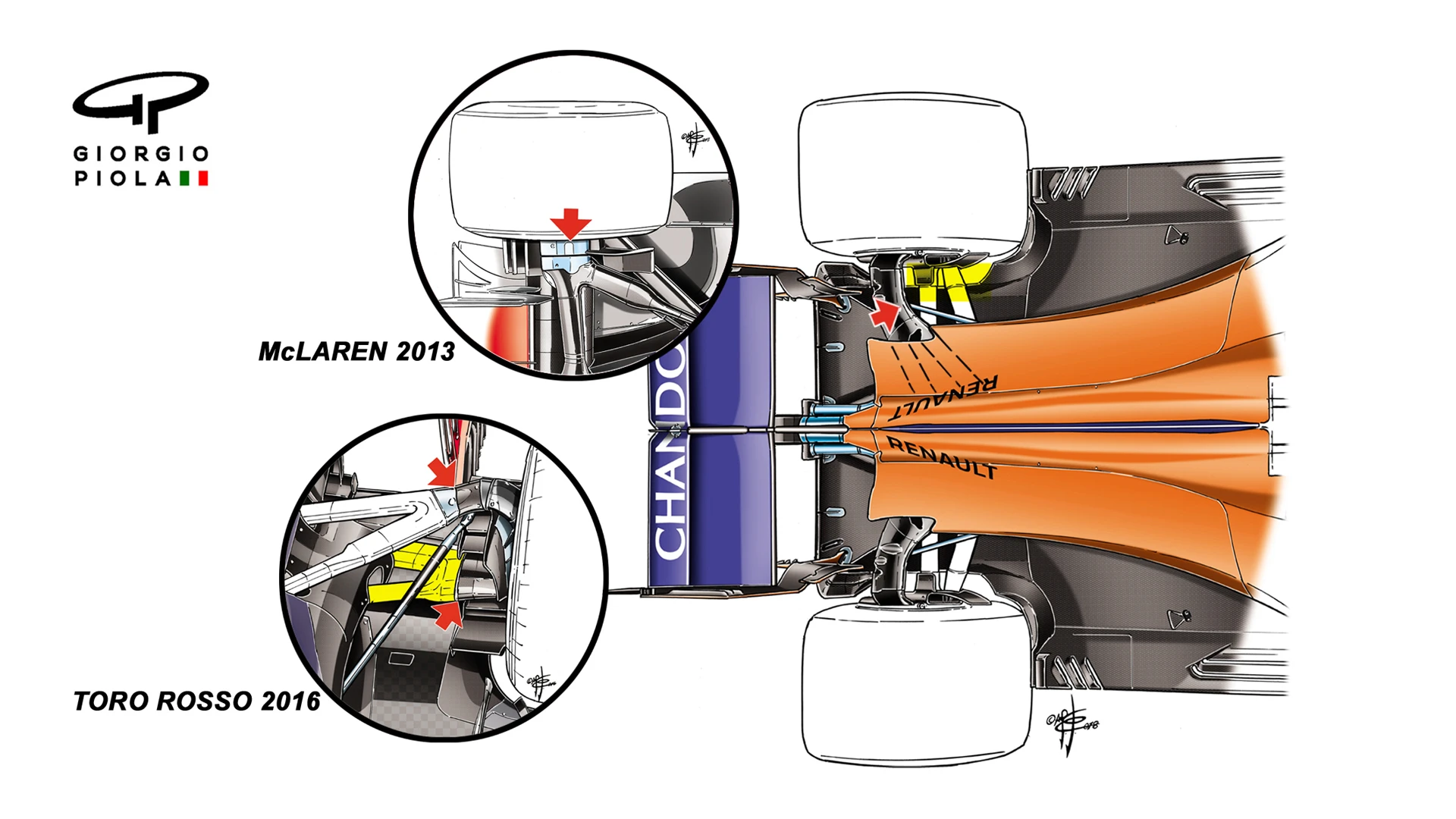Bad weather meant the teams did over 600 fewer laps at this year’s opening test than 12 months ago – but that didn’t prevent some from unveiling intriguing new technological developments. And one of the more eye-catching came from McLaren…
The Woking team have always been keen on using the rear suspension to improve the aerodynamics at the rear of the car, and the late switch from Honda to Renault power wasn’t going to stop them making it a priority once again for the MCL33.
This year’s super aggressive design (above) sees the team using a big bracket on the top wishbone, similar to what they introduced to F1 for the first time in 2013 (see inset). The top wishbone is angled very far forward, which produces a very narrow triangular shape, not unlike Toro Rosso's lower wishbone of 2016 (see inset).
What makes the design so advantageous aerodynamically is that the pick-up point of the pushrod link is not close to the upright, but nearly in the middle of the top wishbone, freeing up the area around the rear tyre and thereby improving airflow in that area of the car.
Of course, this approach isn’t without its potential drawbacks, and McLaren will have had to have done their sums to make sure the advantage they gain aerodynamically compensates for the handicap of having to make the top wishbone much heavier in order to guarantee the necessary stiffness.
Next Up
Related Articles
.webp) How F1 drivers recharge during the winter break
How F1 drivers recharge during the winter break.webp) Unlocked‘We have a lot of hopes’ – Vasseur on Ferrari's 2026
Unlocked‘We have a lot of hopes’ – Vasseur on Ferrari's 2026 Who are the 2026 F1 drivers?
Who are the 2026 F1 drivers?.webp) 7 things to be excited for in the 2026 F1 season
7 things to be excited for in the 2026 F1 season/16x9%20single%20image%20(3).webp) Exclusive‘I'm used to being thrown in the deep end’ – Lindblad
Exclusive‘I'm used to being thrown in the deep end’ – Lindblad.webp) ExclusiveZhou on why he has ‘high trust’ in Cadillac project
ExclusiveZhou on why he has ‘high trust’ in Cadillac project
